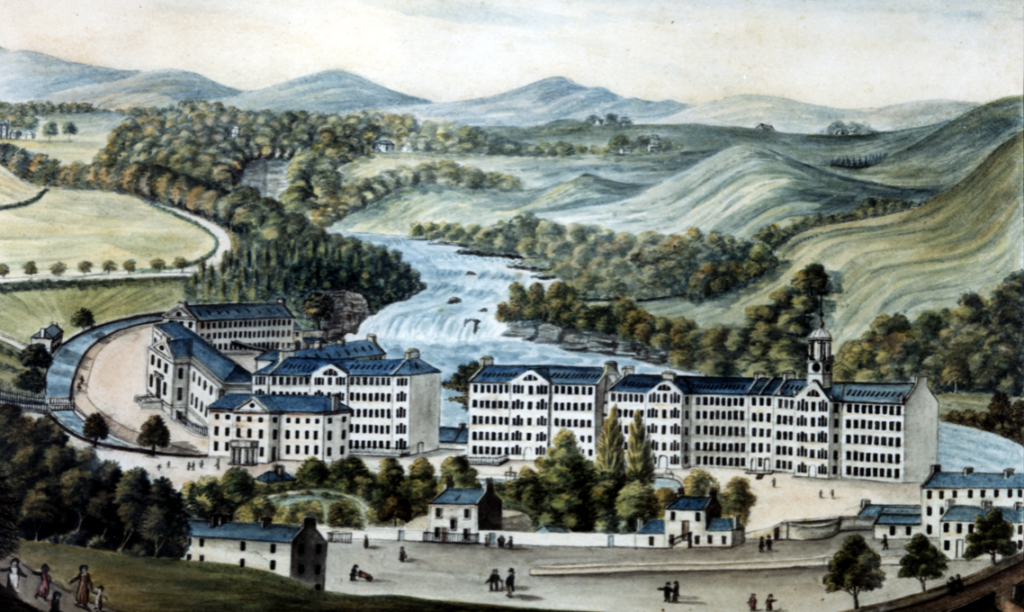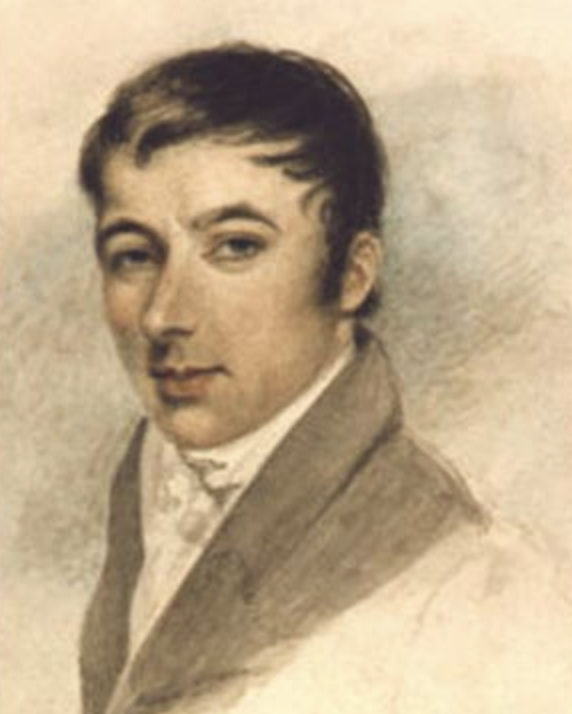Robert Owen’s New Lanark Village
Early Life
Socialist, philanthropist and Utopian idealist Robert Owen was born on this day in 1771. He was originally born and brought up in Wales in a working class background. He was exceptionally bright whilst at school and as a pupil-teacher helped to teach the younger children. Who could have imagined that his early upbringing would play such an important factor in Robert Owen’s vision for New Lanark village.
Working initially in the textile trade in London, he then moved to Manchester where he supervised the running of a spinning mill. Love and marriage to Caroline Dale was what eventually brought him to Glasgow. In the early 1780s, his father-in-law David Dale had purchased the land near Lanark which included the fast flowing waters of the Falls of Clyde. The mills built in the early 1780s were successfully powered by the water and the community there became known as New Lanark.
New Lanark – The Early Days
Although Dale built a thriving business it grew on the back of a workforce of over 1,100 of which 362 were adults. The remainder were children! Although this may seem obscene, for the time it was normal. The children at New Lanark, many of whom were orphans, were well-clothed, treated well with nourishing meals and kept in comfortable and clean accommodation. The remainder of the children were from many families of Highlanders who had been displaced by the Highland Clearances. Entire families lived and worked at New Lanark.
Having taken over the running of New Lanark in 1799, Robert Owen almost lost New Lanark in 1806. America placed an embargo on the export of cotton, thus pushing the price of cotton up. However, with the aid of new partners he was able to save New Lanark and with it bring in a “new society.”
Robert Owen’s New Lanark Vision
Amongst many of the changes that he brought in were:
- Good quality purpose-built living quarters for all families.
- A Sick Fund was established to care for ill workers and families.
- A Savings Bank into which a small percentage of a worker’s wage would be deposited.
- Education for all children from the age of 18 months up to age 10, later extended to 12 years of age.
- Each evening the school would remain open for youngsters aged 10 to 20 who had worked in the mill during the day, to continue further education if they wished.
- A village shop was set up where quality food was sold at barely above cost price, thus improving the overall health of the workers.
These and many other new practices brought visitors from all over Britain and America to see how Owen was able to make this “new society” viable and economically sound. This very short video gives an overview of what Owen managed to achieve and why New Lanark became something that like minded business owners aspired to.
As a UNESCO World Heritage Site, New Lanark has been maintained and restored back to exactly as it was in the 19thcentury. As a conservation village, and to remain true to its original appearance, all repair and restoration work is carried out using appropriate traditional materials and workmanship, and blending in with the existing historic fabric.
If time permits, New Lanark should be on everyone’s list of places to visit. Let Edinburgh Cab Tours build it into one of our Customised Tours.



